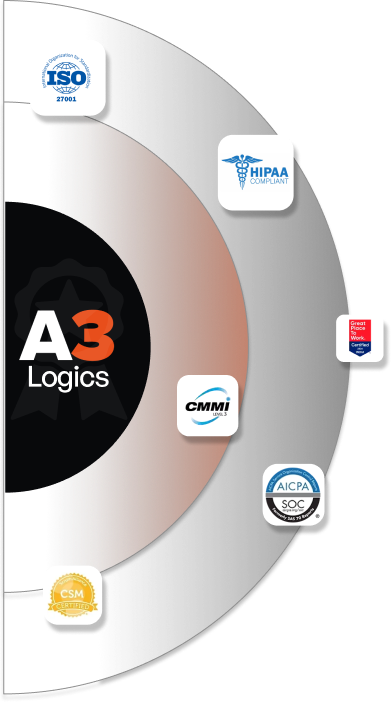Navigating Electronic Data Interchange (EDI) doesn’t have to be complicated. Here we’ve put together this EDI glossary to simplify the language of EDI for businesses of all sizes. Whether you’re just starting with EDI or looking to sharpen your understanding, this resource offers clear, concise definitions of key EDI terms, technologies, and transaction processes.
Our glossary is designed to support your journey toward seamless digital data exchange with partners, vendors, and systems. Let this guide be your companion as you build a smarter, more connected supply chain and business ecosystem.

Table of Contents
A
AS2 (Applicability Statement 2)
A secure protocol used for transferring data over the internet, commonly used in EDI transactions.
Acknowledgment (997)
A confirmation sent after receiving an EDI document, indicating whether it was accepted or rejected.
API (Application Programming Interface)
A set of tools and protocols that enable different software systems to connect and share data efficiently.
ANSI X12
A standardized format used primarily in the U.S. for structuring electronic business documents during data exchanges.
Advance Shipping Notice (ASN)
An EDI document (856) sent by a supplier to inform the buyer of a pending shipment, including details such as contents and expected delivery date.
B
Business Process Integration
The alignment of internal systems and workflows using technology like EDI to improve efficiency and data consistency.
B2B (Business-to-Business)
Describes commerce between two businesses, typically involving wholesale transactions or supply chain activities.
Business Partner
Any organization involved in EDI transactions, also referred to as a trading partner.
B2C (Business-to-Consumer)
Refers to transactions where a business sells products or services directly to individual customers.
Batch Processing
A method of processing grouped data transactions at scheduled times, rather than in real time.
Barcode
A scannable code used to represent product or shipment data, often integrated into EDI workflows for tracking purposes.
C
Cross-docking
A logistics method where goods are transferred directly from inbound to outbound transportation without long-term storage.
Certification Authority
An entity that issues digital certificates to verify identities and enable secure electronic communication.
Control Number
A unique ID is assigned to each EDI transaction for tracking and reference purposes.
Clearinghouse
An intermediary that receives, checks, and forwards EDI documents between trading partners.
Compliance Checking
The validation of EDI documents to ensure they meet the required standards and agreements.
Cloud EDI
The use of cloud-based platforms to manage and exchange EDI documents, eliminating the need for on-premise systems.
Communication Protocol
A defined set of rules that governs how data is exchanged between systems across a network.
Composite Data Structure
A group of related data elements combined to represent more complex information in an EDI message.
D
DUNS Number
A unique 9-digit identifier assigned to businesses for use in EDI and other official records.
Data Element
The smallest unit of information in an EDI file, representing a single value like a date, amount, or identifier.
Direct EDI/Point-to-Point
A communication model where EDI documents are exchanged directly between business partners without intermediaries.
Digital Certificate
An electronic credential is used to verify identities and ensure secure, encrypted communication.
Delimiter
Special characters that separate elements or segments within an EDI message.
E
Error Report
A notification that highlights issues encountered during EDI processing, such as formatting errors.
EDI (Electronic Data Interchange)
A system for sending business documents in a standardized electronic format between trading partners.
ERP (Enterprise Resource Planning)
Business software that integrates and manages core processes like finance, supply chain, and operations in one system.
EDI Outsourcing
The practice of hiring a third-party provider to manage EDI systems, document exchanges, and technical support.
Envelope
The digital wrapper of an EDI message that includes key metadata like sender, recipient, and message structure.
EDI Translator
Software that converts EDI files into readable formats for internal systems and vice versa.
Encryption
The process of encoding data to protect it from unauthorized access during transmission.
E-commerce
The electronic buying and selling of goods or services through online platforms and systems.
EDIFACT (Electronic Data Interchange For Administration, Commerce and Transport)
A global EDI standard developed by the United Nations for cross-industry, international communication.
F
Functional Group
A collection of related EDI documents grouped under a common header and trailer for organized transmission.
Functional Acknowledgment (FA)
An EDI message sent to confirm that a transaction has been received and syntactically processed.
G
GS1
A global organization that develops and maintains supply chain standards, including barcodes and product identifiers.
GTIN (Global Trade Item Number)
A unique, standardized product identifier used globally in trade and EDI communications.
GS1-128 (formerly UCC/EAN-128
A barcode standard used to encode detailed product or shipment data, supporting EDI integration.
H
HIPAA EDI
EDI standards are required for electronic healthcare transactions, mandated under the HIPAA regulations in the U.S.
I
Interchange Control Header (ISA)
The opening segment in an ANSI X12 message contains sender and receiver information.
Integration Broker
A middleware tool or service that enables the exchange of data between different internal systems or external partners.
Invoice
An EDI document (810) sent by a seller to request payment from a buyer for delivered goods or services.
Interchange Control Trailer (IEA)
The final segment of an ANSI X12 message, summarizing the number of transaction sets included.
J
Just-In-Time (JIT)
A strategy where materials are received only when needed in production, reducing storage and inventory costs.
JSON (JavaScript Object Notation)
A lightweight data format used to represent structured information, often for web APIs and integrations.
L
Loop
A repeated group of segments in an EDI document, often used for listing multiple line items or occurrences.
M
Message Standards
Rules and formats that dictate how EDI documents are structured for compatibility and consistency.
Mapping
The process of converting data between formats to enable seamless communication between different systems.
P
Payment Order/Remittance Advice
An EDI document (820) used to send payment details or confirm payment for invoices.
Partner Profile
A configuration that defines how EDI messages should be exchanged with a specific trading partner.
Public Key Infrastructure (PKI)
A system that manages encryption keys and digital certificates for secure data transmission.
PKI (Public Key Infrastructure)
A framework that supports secure digital communication through encryption and digital certificates.
Purchase Order (PO)
An EDI document (850) issued by a buyer to request goods or services from a supplier.
R
Real-time Processing
Immediate data processing as it is received or generated, enabling faster updates and actions.
RA (Remittance Advice)
An EDI document (820) that provides detailed information about payments and the invoices they correspond to.
S
Segment
A group of related data elements in an EDI document that conveys a specific business detail.
SAP IDoc (Intermediate Document)
A standardized document format used within SAP systems for data exchange between internal or external systems.
Segment Terminator
A special character marking the end of a segment in an EDI message, such as a tilde (~).
Service Bureau
A third-party provider that manages EDI operations for businesses without in-house capabilities.
SKU (Stock Keeping Unit)
A unique identifier used to track inventory items, often used in EDI and supply chain management.
Supply Chain Management
The coordination of sourcing, production, and delivery activities to efficiently move goods to consumers.
Ship Notice/Manifest (ASN)
An EDI document (856) that outlines shipment details such as contents, packaging, and delivery schedule.
T
Trading Partner Agreement
A formal agreement that outlines how two businesses will exchange EDI documents, including technical standards and responsibilities.
TMS (Transportation Management System)
Software that helps businesses plan, manage, and optimize transportation and logistics operations.
Transaction Set
A group of related EDI documents exchanged as part of a complete business transaction.
Trading Partner Number
A unique identifier used to distinguish specific trading partners in EDI communications.
U
UN/EDIFACT
An international EDI standard developed by the United Nations, widely used outside North America.
UCC (Uniform Code Council)
An organization (now part of GS1) that helped create standards for product identification and EDI usage.
V
VAN (Value-Added Network)
A private network service that securely routes EDI documents between trading partners.
W
Web EDI
An internet-based EDI solution that allows businesses to exchange electronic documents via a web browser.
X
XML (eXtensible Markup Language)
A flexible format for structuring data, used for sharing information between different systems and platforms.
X12 Version/Release
Specifies the version of ANSI X12 standards being used, ensuring compatibility between trading partners.
Final Take
Navigating Electronic Data Interchange (EDI) doesn’t have to be complicated. Here we’ve put together this EDI glossary to simplify the language of EDI for businesses of all sizes. Whether you’re just starting with EDI or looking to sharpen your understanding, this resource offers clear, concise definitions of key EDI terms, technologies, and transaction processes.
Our EDI glossary is designed to support your journey toward seamless digital data exchange with partners, vendors, and systems. Let this guide be your companion as you build a smarter, more connected supply chain and business ecosystem.
Get in touch with us for all your EDI service needs. As an industry-leading EDI service provider, we have a solution for all your EDI needs.





